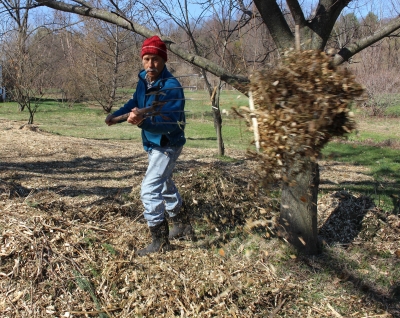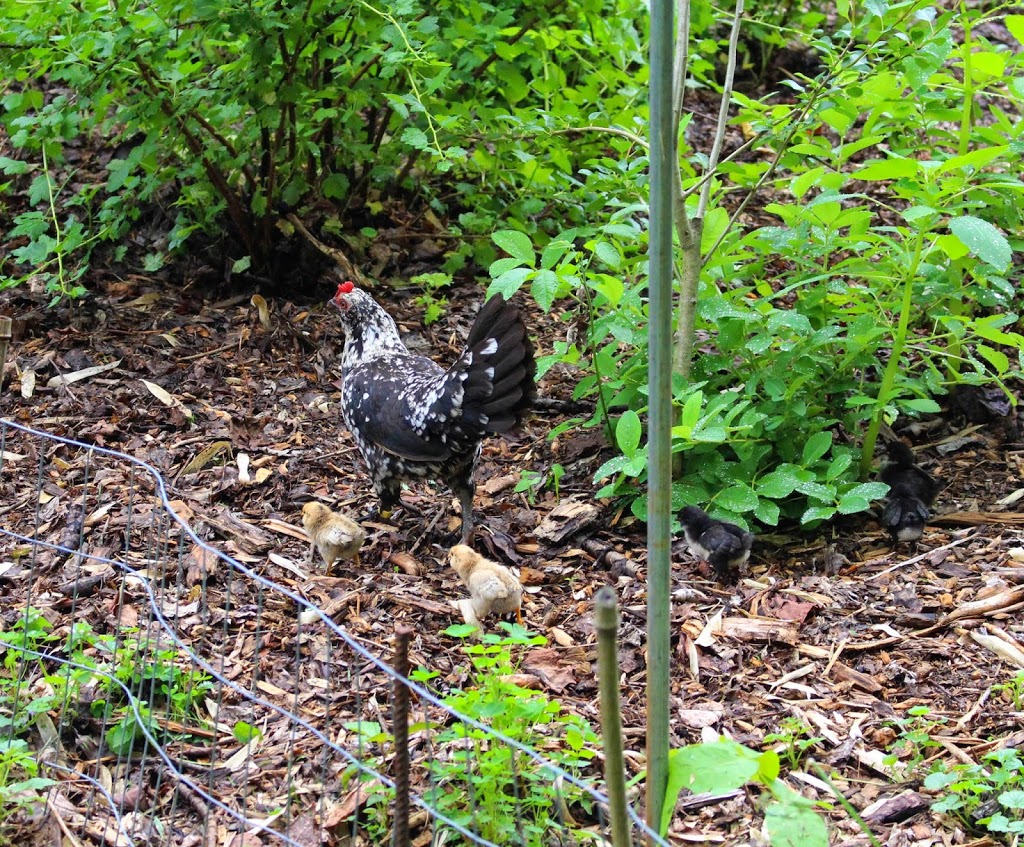My Dog and I Have Odd Tastes
In My Opinion . . .
Note: The following editorial comments represent the opinions of the writer and do not necessarily represent the opinions of the publisher.
I don’t understand the current — decades long, now — infatuation with the “stinking rose,” as garlic used to be called. Not to reveal my age, but I don’t remember ever seeing, smelling, or tasting garlic in my youth. Not that I didn’t; I just don’t remember it if I did. At any rate, in my family circle, at least, it would not have generated the undue enthusiasm it does these days. Whole festivals, for instance!
I don’t dislike garlic. Mostly, when I’ve used it, it’s flavor is lost when cooked. Except when roasting turns the texture satiny and the flavor bite-less; then it’s quite delicious spread on bread or baked potato, or mixed with vegetables. Mmmmm.
But still not worth planting. It’s my belief that many gardeners devote all too much space to growing garlic. Is home-grown garlic really that tasty, tastier than what you can pick off a supermarket shelf or from a bin at the farmers’ market?
I’ve seen very small vegetable gardens in which a third of the area was devoted to the stinking rose. For my money, I’d rather be picking fresh lettuce, asparagus, or peas — all of which taste significantly different and better within minutes of harvest than when bought from any market, farm or otherwise. Or peppers, tomatoes, sweet corn, or green beans, because I can choose the best tasting (to me) varieties to plant in my garden.
As you might guess, I don’t grow garlic — not in my vegetable garden, at least. Why devote even a square foot of space in that compost-rich, drip irrigated, sun-drenched ground to such a thankless vegetable?
I do sometimes grow garlic in various patches of open ground in the large patch of gooseberries, grapes, and a miscellany of other plants behind my garden. The only improvement that soil experiences is annual mulching with autumn leaves, which has enriched the ground below with humus. But no irrigation, which the garlic, planted in early autumn and then harvested the following summer, hardly needs because it can run on rainfall that falls in autumn through spring.
Garlic doesn’t seem to get the hint that I don’t particularly want to grow it. Enough bulbils that form at the tops of scapes touch down each year to make new garlic plants. Most are spindly, giving rise to Lilliputian cloves.  But if I want some garlic flavor in spring, I can pull stalks out of the ground, peel off the outer covered of leaf sheath, and chop up the ivory white lower portion for use. Many I just pull out and toss into the compost pile; the garlic is getting weedy.
But if I want some garlic flavor in spring, I can pull stalks out of the ground, peel off the outer covered of leaf sheath, and chop up the ivory white lower portion for use. Many I just pull out and toss into the compost pile; the garlic is getting weedy.
Okay, you garlic lovers, go ahead and pelt me with tomatoes. But hold the garlic.
Sammy Stalking
My dog Sammy has grown very fond of stalks. Asparagus stalks. Why can’t he channel that stalky affection to the garlic sprouting behind my garden? Perhaps some culinary magic with garlic poured over his dog food and guided walks over to some of the growing clumps could bring him around.
I planted asparagus outside the fenced vegetable garden with the knowledge (ha!) that no furry animals would dine on it. Sammy has plowed his way through or gracefully leapt over the temporary chickenwire enclosure meant to keep him asparagus-free. A recently purchased electric fence should keep him at bay — also from the persimmons, another of his favorites, later in summer. 
Of Mulch Importance
On a more serious note, now, with recent rains maintaining good soil moisture, is an ideal time to mulch. Earlier this season, mulch would also have been good, except that it would have delayed soil warming and, hence, seed germination, planting and growth of annual vegetables and flowers.
Mulch spread atop dry soil has to be wetted before letting water percolate down into the ground below.  If spreading mulch is delayed until the soil turns dry, all the more water will be required to give the soil below a good drenching.
If spreading mulch is delayed until the soil turns dry, all the more water will be required to give the soil below a good drenching.
A large pile of wood chips sits on the far side of my wood pile, compliments of local arborists. Day by day, I’m spreading it for an attractive, soil enriching, moisture sealing blanket over my soil — even around my volunteer garlic plants.




Hahahaha. One reason I grow garlic is that much of the garlic available in our grocery stores comes from China and has been bleached for color and otherwise treated so that it will not sprout. And yes, I do think the taste is far superior to what I can get in the grocery stores. But to each his/her own!
I did not grow up with garlic and truly did not develop an appreciation until the 1999 North Quabbin Garlic and Arts festival. Soon after I married into a rich culinary culture that celebrates the “stinking rose” and I too now expound on its virtues.
Ever watching children or visitors when they first see a garden. How get drawn into the patchwork of textures and colors. There’s a pause, a silence, as they step through the dew covered leaves, the smell of basil as they brush down path. And then they stop and exclaim as they point, “what is that?”
As a season garden guide I could response blind folded “Garlic.” It continues to fascinate.
And what could be a more delightful garden companion. Garlic asks for so little and rewards with so much. The planting is done in early fall when there’s little else to do. A few buckets of mulched leaves from the mower assures no weeding and it shrugs off drought. Garlic is a good place holder too, as you through the planting season it frees up space for a fall planting of beans or lettuce. As long as you move garlic around you should have no issues with nematodes. Garlic does need good drainage and rich soil, but those are modest requests.
I won’t expound upon the medical or health benefits of garlic because I don’t know those things, but garlic makes a wonderful gift during the holiday season and in the years when I have not prepared garlic gifts for my friends and family they have come asking. Garlic bread, garlic in tomato sauce, garlic and shrimp; I’ve gone from never using garlic to using every clove. And lets not forget Mel Bartholomew (of Square Foot Gardening fame). In Mr. Bartholomew’s publication “High-Value Veggies: Homegrown Produce Ranked by Value” puts garlic right at the top in terms of value (behind herbs, parsnips, and the cherry tomato). https://tinyurl.com/y93g7xgx
And really, who wants to be fussing with bolting lettuce or peas when the dog days of summer roll around. And as for asparagus (Hadley grass) now there’s a weed you won’t find taking precious space in my garden.
Most garlic at the supermarket is grown in China and shipped to the USA so YES it is worth growing in our garden. In only 50 square feet we can grow about 130 bulbs. In the fall we plant them and in the spring they are one of the first things that come up in the garden. I’m in the Catskill mountains and we plant watermelon and cantaloupes starter plants under the garlic in in June. In July we have garlic scapes and several weeks later we pull up the garlic and underneath big beautiful melons are growing! Garlic is a reliable crop. Never have we had our crop succumb to pests or environmental conditions. And it’s delicious in every way!
You make a compelling argument (especially the China part). I may rethink my “no garlic in the garden” policy. Thanks.
It is probably for the best that Sammy avoids the garlic as it contains a compound called thiosulfate which can cause anemia in dogs if consumed in quantity.
Maybe he knew about that; he’s a very smart dog.
Garlic scapes have incredible aroma and flavor. If you get a really good, hardneck variety, you might appreciate the aroma and sweetness, which is really similar to the flavor of garlic scapes but even better. I consider garlic two crops in one. Still, hardneck seems to dry out rather quickly, so its really only worth growing a wee bit, not enough for a major harvest… which is often how I like to grow edible vegetables anyway: just enough to not be overwhelmed and appreciate their ephemeral presence in my garden.
Speaking of alliums, I live on the west coast and am considering putting in a ramp patch in my damp woods. Do you have any idea if this bulb will survive well west of the cascades? They sure are expensive to purchase and if you have any pointers on where I might be able to get reliable info I’d greatly appreciate it!!
I don’t see why ramps would not survive in your area. Give them a try.